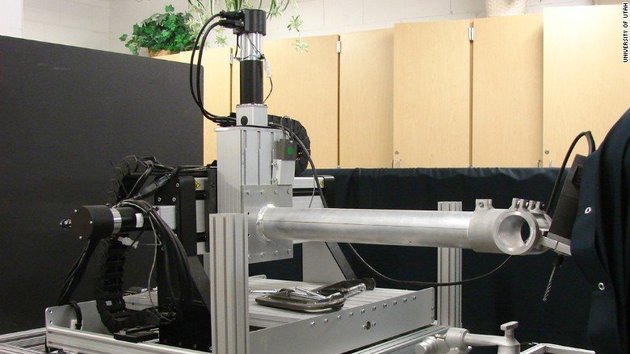
Scientists have developed a drill that is able to perform brain surgery in two and a half minutes, a procedure that otherwise takes humans two hours from start to finish.
The team at the University of Utah were inspired by the technology available in the auto machine industry, and wanted to design a similar computer-driven drill to do the 'heavy lifting' on the operating table.
William Couldwell, a neurosurgeon who worked on the device, said: "We knew the technology was already available in the machine world, but no one ever applied it to medical applications."
Cranial surgery obviously requires exceptional levels of precision, and surgeons are required to use hand drills to make intricate openings to the human skull, adding hours to a single operation.
Couldwell, said: "It was like doing archeology...we had to slowly take away the bone to avoid sensitive structures."
And so the hardware needed to be developed to produce fast, clean, and safe cuts reducing the time the wound is open and the time that the patient has to be anathetised.
Not only that, but they also had to produce corresponding software to work "like Google Maps" according to professor in mechanical engineering A.K. Balaji, showing the drill a safe route to cut along.
Using CT images of the brain as a map of potential danger zones, the drill has guidance for arteries and veins to avoid.
Once they had the prototype, the surgeons decided to give it the "ultimate" test - translabyrinthine surgery.
Tanslabyrinthine surgery exposes slow-growing, benign tumors that form around the auditory nerves. The cut is not only difficult, but the cutting path also must avoid several sensitive features, including facial nerves and the venous sinus, a large vein that drains blood from the brain.
Risks of this surgery include loss of facial movement.
After a successful operation, Couldwell said: "It's like Monster Garage, except instead of machining a part, we are machining the skull."
The team hopes that this device, will in the future decrease incidence of infection, the chance of human error and overall cost of the surgery, and not just in brain surgery, but other operations like hip implants.
Source: Huffington Post
